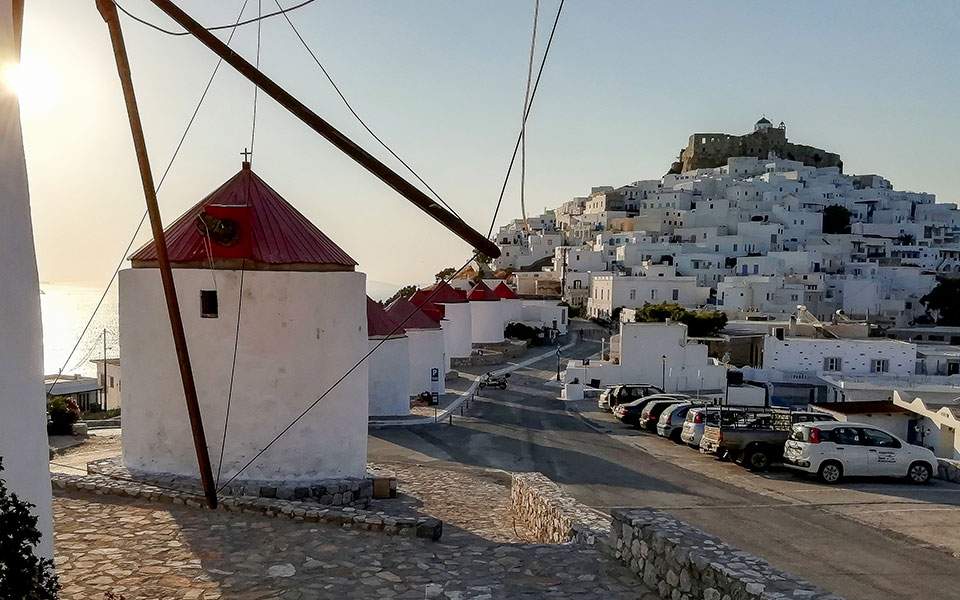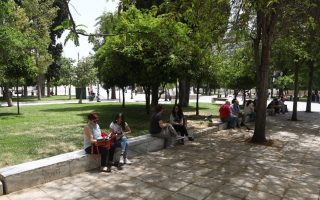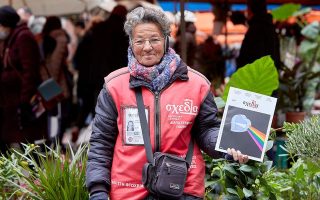Virus-free islands brace for visitors

As the Covid-19 tidal wave sweeps across the planet, the Greek islands are riding out the storm like virus-free life rafts. We didn’t think that it was possible, but these little parcels of paradise have become even more irresistible. The overwhelming majority of Greek islands successfully closed their gates to the coronavirus, thanks to the responsible attitude of their local communities, both rural and urban. Now, summer is approaching, along with the time to let the tourists back in. How can these islands succeed in doing that without endangering their communities and putting paradise at risk?
“We’re preparing to welcome visitors coming from Greece and foreign countries,” says Nikolas Komineas, the mayor of Astypalaia. “Most businesses are getting ready, and they’ll be taking all necessary safety measures. We’re hoping to welcome our first friends from [elsewhere in] Greece by the beginning of June and then, a little later, those from other countries, too. We managed to keep the coronavirus at bay; everyone was very careful. Despite the difficulties that lie ahead, we’re optimistic and we’re ready for the fight. Astypalia, like all the other smaller islands, has some advantages. For example, we don’t have large tourist facilities where many people gather. Independent rooms and apartments make up most of the accommodation on the island. As for the sea, you can always find a small one-person beach.”
In the last few years, Astypalaia, nicknamed “the Butterfly of the Aegean,” has been visited by more than 30,000 people, which is impressive for an island with only 1,300 permanent residents. According to Komineas, few of the reservations for July and August have been canceled: “The protocols that will be implemented prior to and during travel by plane or by boat represent the most critical issue. Tourists coming from outside the country will need to take a test shortly before they travel to Greece. These are quick tests.” As for its medical center, Astypalaia has four doctors on the staff and equipment for room isolation in case that becomes necessary.
The island of Sifnos is looking forward to the start of the tourist season, too. “We’ve been doing great so far, but tomorrow remains unsure,” says Maria Nadali, the mayor of Sifnos. “The island must stay open for business while protecting its health. We’re waiting for instructions, but our economic situation is getting tight. Shops and hotels are slowly reopening. Wherever possible, more space will be made available in shops. It’s crucial for us that the boats come. Without the boats, the islands don’t make it.”
Sifnos, which can accommodate more than 5,000 visitors, is in dire need of tourism. The island’s professional associations have been reaching out to those visitors who’ve already made reservations on the island to encourage them – provided they have the choice – to go ahead with their trip. It’s important to note that nearly 60% of these reservations were from foreign countries. “Luckily, a large part of the July-August reservations are still in place, but there have been cancellations,” Nadali says. She also notes that both the medical center and police station are understaffed – there are, for instance, only three policemen serving on the island.
On the island made famous by Luc Besson’s 1988 hit film “The Big Blue,” preparations for reopening the island are under way. “Up until now, we’ve been preventing people from coming to the island for safety reasons,” says Eleftherios Karaiskos, the mayor of Amorgos. “The time has now come to open up.” He says the restaurants will open, as will most hotels, although some people are still making up their minds.
“We are looking at how best to take the next step,” says Karaiskos. “For example, how will people be accommodated at hotels or in tavernas? In some places, we have a space problem, like in the narrow streets of Hora. How will people be transported in hotel vans and on the public buses, given that the permissible number of passengers has been reduced? All these issues will need addressing.” However, even before all that, there’s the question of the boats that will bring visitors to the island. Under what conditions will they operate, and what will happen to the high-speed vessels, which face particular difficulties in that most or all their passenger spaces are enclosed areas? The staffing of the medical center on Amorgos may also be an issue here, as three of their doctors usually take the summer off.
The island of Tilos has also kept a spotless record since the start of the pandemic. “We’ve kept the island afloat and in good health; there hasn’t been a single case among the 450 permanent residents,” says Mayor Maria Kamma-Aliferi. “On Tilos, there are more than 100 businesses that rely mainly on tourism, and we offer more than 1,300 beds. We want to receive people while remaining safe. Our island – like all the islands – is incredibly beautiful. Just two days ago, I went out for a walk and found myself in the middle of a meadow of wild orchids. Partridges were foraging about, the place smelled like heaven and a hawk was flying low. The island has 60 kilometers of trails, and welcomes a lot of older hikers. Tilos has stable friendships. More than half the tourists [that come every year] have visited the island before.” Nonetheless, the mayor is concerned about the possibility of the smaller islands being overlooked or undervalued. “The islands need support. They have to reopen and people must come, while taking the necessary precautions. We don’t want poverty, we don’t want our island to become uninhabited rocks.” This cry for help needs to be heard, no matter how far away Tilos is.





